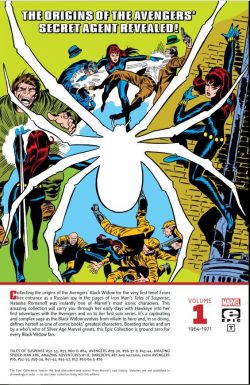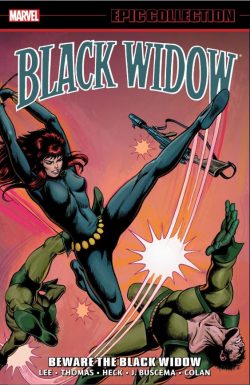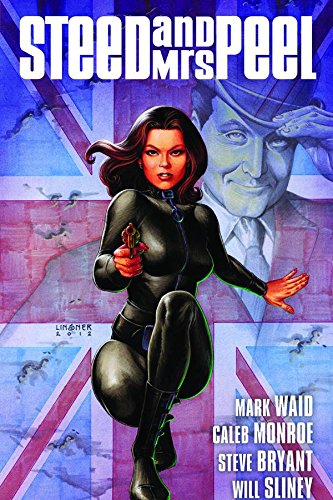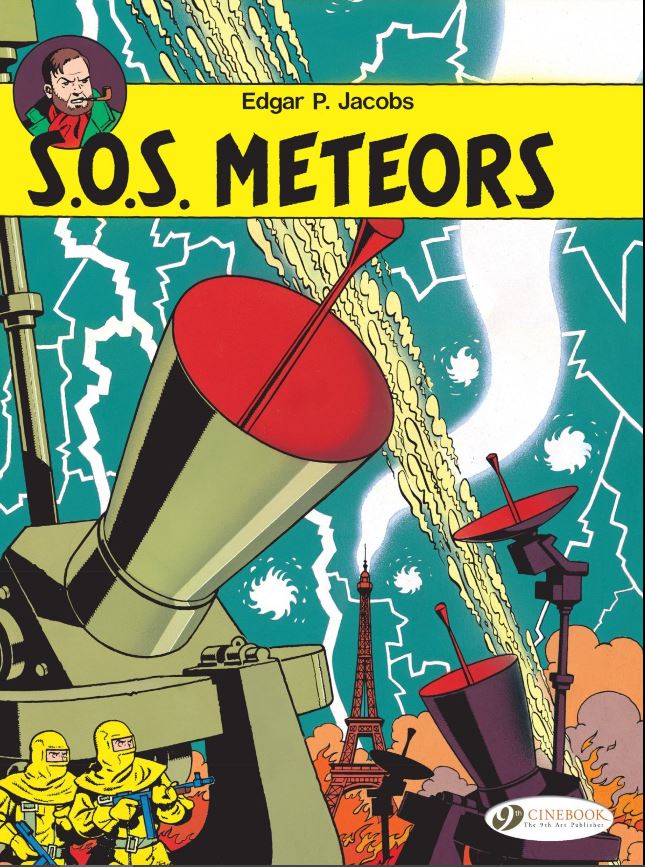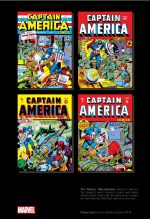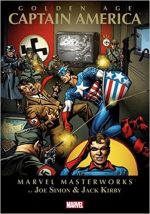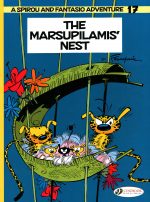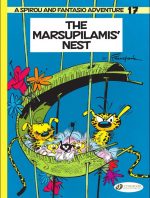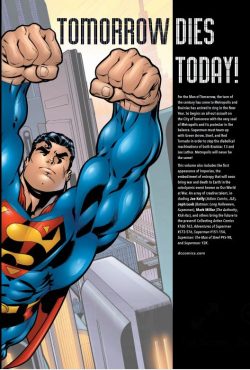
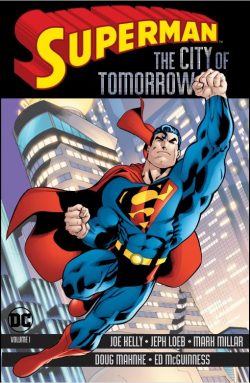
By Jeph Loeb, Stuart Immonen, Mark Millar, Mark Schultz, Joe Kelly, Mike McKone, Steve Epting, Dough Mahnke, German Garcia, Joe Phillips, Yannick Paquette, Kano, Butch Guice, Ed McGuinness & various (DC Comics)
ISBN: 978-1-4012-9508-0 (TPB)
The Man of Tomorrow has proven to be all things to most people over more than 80 years of action and adventure, with Jerry Siegel & Joe Shuster’s iconic Superman now practically unrecognisable to most fans after continual radical shake-ups and revisions. Nevertheless, every refit and reboot has resulted in appalled fans and new devotees in pretty much equal proportion, so perhaps the Metropolis Marvel’s greatest ability is the power to survive change…
These days, in the aftermath of the Future State and Infinite Frontier events, myriad decades of accrued mythology have been re-assimilated into an overarching, all-inclusive media dominant, film-favoured continuity, with the grittily stripped-down, post-Crisis on Infinite Earths Man of Steel (as re-imagined by John Byrne and built upon by an army of immensely talented comics creators) regarded as a stunning high point.
As soon as the Byrne restart had demolished much of the mythology and iconography which had grown up around the “Strange Visitor from Another World†over fifty glorious years, successive writers, artists and editors expended a lot of time and ingenuity restoring it, albeit in terms more accessible to a cynical, well-informed audience far more sophisticated than their grandparents ever were.
Even so, by the mid-1990’s Byrne’s baby was beginning to look a little tired. The sales kick generated by the Death… and Return of Superman was already fading, so the decision was made to give the big guy a bit of a tweak for the fast-approaching new millennium: bringing in new creators and moving the stories into more bombastic territory.
The fresh tone was augmented by a new sequence and style of trade paperback editions and this new collection adheres to that format in gigantic themed tomes like this initial outing re-presenting material from Action Comics #760-763; Superman #151-154, Superman: Man of Steel # 95-98; The Adventures of Superman #573-576 and Superman: Y2K, covering December 1999-March 2000.
It spectacularly opens with ‘We’re Back!’ by Jeph Loeb, Mike McKone & Marlo Alquiza (from Superman #151), which sees the recently wrecked Daily Planet restored, rebuilt and returned to glory after a dark period under the ownership of Lex Luthor, allowing Lois Lane-Kent plenty of opportunities for reflection, remembrance and handy recapping before the sinister son of alien marauder Mongul explosively crashes to earth…
‘Higher Ground’ (by Stuart Immonen, Mark Millar, Steve Epting & Denis Rodier from Adventures of Superman #573) then details Luthor’s machinations and political chicanery in the creation of a proposed elite “hypersector†to cap the rebuilding of “his†City of Tomorrow. Only stubborn landowner Jerome Odett stands in his way, but with the mayor on his team and bending the law to his needs Lex is assured of victory… until Superman intervenes using sentiment, nostalgia and happy childhood memories as his weapons of choice to arouse popular opinion…
Mark Schultz, Doug Mahnke & Tom Nguyen then reveal that ‘Krypton Lives’ (Superman: Man of Steel # 95) after a Superman robot malfunctions in the Antarctic, allowing humans to enter the Kryptonian’s Fortress of Solitude and triggering the escape of a bizarre string of ancient yet impossibly alive Kryptonian artefacts and creatures.
Forced to destroy the last vestiges of his alien heritage, Kal-El returns to Lois, thinking that a precious chapter of his life is over, but he couldn’t be more wrong…
Crafted by Joe Kelly, German Garcia & Joe Rubinstein, Action Comics #760 depicts ‘…Never-Ending Battle…’ as a legion of minor menaces and misfits lead the Man of Tomorrow to Latina sorceress La Encantadora who sells slivers of Kryptonite to thugs trying to lay our hero low. Even after the elusive enchantress is corralled, she delivers one last surprise which will make much mischief for the Last Son of Krypton…
‘Deadline U.S.A.’ (Superman #152, Loeb, McKone & Alquiza) resumes the interrupted battle with Mongul Jr., but all conflict ceases when the mammoth monster finally gets the Man of Steel to stop hitting and listen…
The brutal tyrant has come to warn of a vast, universe-ending threat and, in conjunction with Luthor, is offering to train Superman to beat it…
There are more pedestrian but just as critical distracting problems to deal with. During Superman’s sparring with Mongul, Jimmy Olsen took a photo of the hero’s hand sporting a wedding ring. When the picture is leaked, the media goes into a feeding frenzy…
‘Something Borrowed, Something Blue’ (Immonen, Millar, Joe Phillips & Rich Faber; Adventures of Superman #574) follows that strand as old foe and potential bunny-boiler Obsession resurfaces in a Superwoman outfit, claiming to be the much-sought Mrs. Superman. However, her deranged tantrum leads to nothing but tragedy and disaster…
Returning ‘Home’ (by Schultz, Mahnke & Nguyen in Superman: Man of Steel #96) Clark Kent finds his Metropolis apartment transformed into a terrifying outpost of his destroyed birthworld, courtesy of renegade miracle machine The Eradicator. In the resultant clash, Superman looks doomed to destruction, until Lois takes decisive action…
Her valiant nature and wifely tolerance is truly tested in Action Comics #761, as – courtesy of Kelly, Garcia & Rubinstein – Lois is abandoned after Wonder Woman requests the Man of Tomorrow join her in battle beside gods against devils.
For the feisty journalist it’s mere days until Clark returns, but she’s blissfully unaware that her husband and the perfect warrior woman have been comrades – and perhaps more – ‘For a Thousand Years…’
The last Christmas of the 20th century ends in Superman #153 (Loeb, McKone & Alquiza) as ‘Say Goodbye’ finds the Action Ace heading into space with Mongul to battle Imperiex, Destroyer of Galaxies who has targeted the Milky Way for destruction…
When the pair implausibly triumph, Mongul instantly betrays his erstwhile pupil and only a violent intervention by bounty hunter Lobo prevents a tragic travesty. What nobody knows is that the Imperiex so recently destroyed is just a fractional drone of the real cosmic obliterator, who is now really ticked off…
Offering a brief pause and change-of-pace ‘A Night at the Opera’ (by Immonen, Millar, Yannick Paquette, Dexter Vines & Rich Faber; Adventures of Superman #575) sees Luthor poison Clark in a churlish attempt to monopolize and impress Lois, before Schultz, Mahnke & Nguyen’s ‘Bridge the Past and Future’ (Superman: Man of Steel # 97) focusses on John Henry Irons – AKA Steel – and his niece Natasha. The high-tech armourers to the City’s police force join Superman against the possessed personification of the Eradicator, still hell-bent on making Earth an outpost of lost Krypton, but now afflicted by an all-too-human consciousness …
As year and millennium anxiously count down to potential doom (kids – this was a genuine concern at the time, you should check it out…) Christmas tensions escalate in Action Comics #762 as Kelly, Garcia, Kano & Rubinstein’s ‘All I Want for Christmas’ finds Man of Steel battling occasional ally Etrigan the Demon beside current foe La Encantadora, before all rediscover the true meaning of the season…
Finally, the long-dreaded doom days begin with the Superman: Y2K one-shot special, crafted by scripter Joe Kelly and artists Butch Guice, Kevin Conrad, Mark Propst & Richard Bonk. ‘The End’ traces the history of the Luthor dynasty in Metropolis, from the first settlers in America to the present day when Last Son Lex practically owns the entire place as a counterpoint to the ongoing action…
With the end of the Holidays fast approaching, staunch traditionalist Clark is facing an existential crisis: Lois and his own mother want to elbow the sacrosanct seasonal tradition of a quiet New Year’s on the Smallville farm for a (professionally-catered, not home-cooked) vacation in the Big City…
Bowing to the inevitable, the Hubby of Tomorrow ferries the family to a Metropolis suddenly gripped with terror: fearing that all the computers on Earth will imminently expire, precipitating the end of civilisation as the millennium closes…
When the countdown concludes, everybody’s fears are totally justified. An alien entity overwhelms the world’s digital systems, triggering a wave of destruction affecting every electronic device on Earth…
Alien digital dictator Brainac 2.5 has upgraded himself since his last attack, but his hatred for Luthor is undiminished. As every hero on Earth battles panic, riots and failing technologies, and Superman and Green Lantern are busy fielding all the nuclear missiles launched during the terrifying induced glitch, the computer dictator is trying his hardest to murder Lex and his new baby daughter Lena Luthor.
As part of his scheme Brainiac 2.5 has also enslaved Earth’s many robotic and android entities such as Red Tornado, Hourman and the Metal Men, but the AI invader is blithely unaware that he too is being used…
With the world – and especially Metropolis – crashing into ruin the secret invader makes its move: from the far distant future the merciless Brainac 13 program has been attempting to overwrite its ancient ancestor and take over Earth centuries before it was even devised…
As described by Loeb, Ed McGuinness & Cam Smith in Superman volume 2 #154 (March 2000), the crisis intensifies in ‘Whatever Happened to the City of Tomorrow?’ as the colossal chronologically-displaced construct begins reformatting the world: converting matter into materials and designs analogous to its own time. Unfortunately, that’s very bad news for the billions of human beings inside buildings, vehicles and vessels abruptly undergoing those transformations…
Even Luthor is helpless, locked out of his own corporate tower as “his†city falls apart whilst the Man of Steel is occupied battling Brainiac 13 and upgraded cyborg assassin Metallo. Assistance arrives in most unwelcome form as little Lena begins offering technical advice. The toddler has been possessed by presumed-destroyed Brainiac 2.5: simultaneously becoming hostage and bolt-hole for the outmoded, nigh-obsolete alien menace…
With the aid of the Metal Men, Superman defeats Metallo and confers with Lois and Jimmy Olsen. The games-mad lad theorises that the transforming city is starting to resemble a gigantic motherboard…
As elsewhere Jonathan and Martha Kent are trapped aboard a subway train programmed to deliver organic units to a slave-indoctrination station, the Action Ace attempts to dislodge the computerising city’s main power cable. When Brainiac 13 tries to digitise and absorb the annoying Kryptonian, it accidentally reverts the hero to a previous incarnation: the intangible electrical form dubbed Superman Blue…
The hostile planetary hacking continues in The Adventures of Superman #576 as ‘AnarchY2Knowledge’ (Millar, Immonen & José Marzan, Jr.) finds the Man of Energy hopelessly tackling Brainiac 13. He seeks to quell the rising body count of helpless humans, whilst far below Luthor and Lena 2.5 battle through marauding B13 creations in the overwritten bowels of the LexCorp Tower towards a stolen secret weapon…
The alien-occupied infant shares a direct link with all Brainiacs’ core programming and has discovered a possible backdoor that could enable them to destroy the all-pervasive program from the future. Their progress is greatly facilitated after Luthor’s lethally devoted bodyguards Hope and Mercy finally locate them. As preparations proceed, the villains opt to rescue Superman, incidentally restoring the Metropolis Marvel to a flesh and blood state. To save Metropolis for his family, the evil billionaire will even work with his most hated enemy…
Superman: Man of Steel # 98 continues the epic with ‘Thirty Minutes to Oblivion’ (Schultz, Mahnke & Nguyen) as the senior Kents escape conversion into B13 drones thanks to a last moment rescue by the Man of Steel and The Eradicator.
After a lengthy period of self-imposed banishment in deep space (for which see Superman: Exile) Kal-El returned to Earth carrying an incredibly powerful Kryptonian artefact which had survived the destruction of the planet. The Eradicator could reshape matter and was programmed to preserve or resurrect and restore the heritage and influence of the lost civilisation at any cost.
After a number of close calls Superman realised it was too dangerous, so he buried it in an Antarctic crevasse and foolishly assumed that ended the affair. Such was not the case and the miracle machine returned many times, always attempting to remake Earth into New Krypton.
When Superman died, it manufactured a new body and sought to carry on Kal-El’s legacy… Eventually it failed and fell into the hands of dying scientist David Connor who merged with the manufactured body to produce a phenomenally powerful – if morally and emotionally conflicted – new hero…
Superman’s understandable anxiety is assuaged as Eradicator points out a weakness in B13 tech assimilation. Its transmode programs have been unable to infect Kryptonian systems such as those in the Fortress of Solitude, but the base has now become the invader’s primary target. If the program masters Kryptonian systems it will be utterly unstoppable…
After finishing off Metallo and the co-opted Metal Men, Eradicator and Superman head to the Fortress, whilst in his factory John Henry Irons and Natasha find their own temporary answer to the threat of the constantly encroaching and bloodthirsty B13 drones…
Deep below LexCorp, Luthor and Lena 2.5 are working towards similar goals with the same insights whilst planning to betray each other later. Admitting that Brainiac core systems can’t even see Kryptonian tech, the baby bodysnatcher advises Lex to modify the robotic warsuit stolen from Superman and deploy it against the apparently omnipotent digital invader.
In the Antarctic, events have moved to a crisis point. The Fortress – transformed by echoes of the original Eradicator – has reconstructed itself into a colossal warrior attempting to overwrite the predatory B13 programs and satisfy its own primary mission… recreating Krypton.
To counter this threat David Connor pays an intolerable price…
The epic comes to a startling conclusion in ‘Sacrifice for Tomorrow’ (Kelly, Garcia, Kano & Alquiza in Action Comics #763) as Superman returns to Metropolis armed with the knowledge of B13’s Achilles’ heel and his repurposed Kryptonian butler Kelex…
Attacking the monstrous computer tyrant with a battalion of mechanoid heroes, the Man of Tomorrow is again repulsed and seeks Luthor’s aid. However, despite Lex’s resolve to work with his nemesis to defeat Brainiac, the billionaire cannot resist turning the warsuit on its previous owner. Typically, Superman was counting on treachery, using it as an opportunity to hijack the Kryptonian armour’s systems to power a forced crash in Brainiac 13…
The blockbuster battle ends as Earth is rapidly reconverted to its original state, but for some inexplicable reason the remission halts outside Metropolis. The city remains a valuable, incomprehensible artefact of a far future with Luthor in the driving seat, frantically patenting thousands of incredible technological advances. There is no sign of baby Lena and the new master of Metropolis refuses to hear her name mentioned…
To Be Continued…
With covers by Phil Jimenez; Dwayne Turner & Danny Miki; Ian Churchill & Norm Rapmund; Bryan Hitch & Paul Neary; Lee Bermejo; Guice; McGuiness & Smith; Immonen & Marzan; Mahnke & John Dell and Garcia & Mendoza, this blistering paperback and digital blockbuster tome introduces a whole new world – and a wealth of fresh problems – for the venerable, wide-ranging cast to cope with: building built upon the scintillating re-casting of the greatest of all superheroes. Lovers of the genre cannot help but respond to the sheer scale, spectacle and compelling melodrama of these tales which will delight all fans of pure untrammelled Fights ‘n’ Tights fiction.
© 1999, 2000, 2019 DC Comics. All Rights Reserved.







